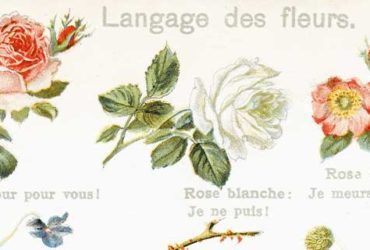Floriography holds the key to why people give roses
Have you ever wondered why so many people give roses for Valentine’s Day? There are a variety of reasons why the rose has stood the test of time as one of the most popular flowers. Red roses represent ideals of beauty, love, and romance across cultural lines. According to Martha Stewart, giving roses became popular due to their intense color, heady fragrance, luxurious petals as well as their hardiness in bouquets.

Valentine’s Day on February 14th is a holiday filled with traditions, including the exchange of chocolates, gifts and cards. While there are other flowers that can be given for this romantic event, including lilies, orchids, and tulips, but red roses are by far the most popular.
Rose cultivation dates back 5,000 years to eastern Asia. Later in the Roman period, they were raised in the Middle East and used as perfume, party décor, and medicine. Most of the roses we see today can be traced back to the late 1700s, when they began to trickle into Europe.
Giving roses for Valentine’s Day goes back to the 19th century, when Victorians used floral bouquets to deliver secret messages to a love interest. The coded communication through use of various flowers and floral arrangements is called floriography. Floriography allows people to express feelings which otherwise could not be spoken.
The coded communication through use of various flowers and floral arrangements is called floriography.
Eventually, the nuances of the language of flowers became so complicated that entire dictionaries were required to interpret the complex meanings of the arrangements. The first dictionary was produced by Louise Cortambert in 1819 under the pen name Madame Charlotte de la Tour. It was titled, “Le Langage des Fleurs.” Many more have been written since.
A Reader’s Digest article suggests that an early figure associated with roses and romance is Lady Mary Wortley Montagu, wife of a British ambassador to Turkey during the 1700s. “Lady Montagu wrote letters home enthusing over a version of Turkish ‘flower language,’ or the process of assigning certain symbolic meanings to certain flowers,” says folklorist Sara Cleto, PhD. “The concept of ‘flower languages’ caught on, especially in 19th-century England, and over the course of that century, roses became ever more tightly linked to romantic love.”
“It is the perfect intense red that oozes luxury, and the large petals are velvety in texture and are complemented well by the surrounding dark green leaves,” Cleto says. “The shape of the bloom is perfect for a romantic bouquet also, as the oval buds open to a large double bloom flower. Another advantage is that this particular rose is thornless and perfect for gift-giving.”
It’s popular to give roses for Valentine’s Day “simply because roses are beautiful, fabulous-smelling flowers that happen to travel really well,” says Cleto. “Flowers are usually shipped over long distances, and roses are both gorgeous and hardy, so that’s a huge part of why this practice has continued.”
The flower itself may not be the only reason for its expression of love. The color of traditional roses, red, represents passion. Interestingly, the pink rose stands for appreciation and grace, the yellow iteration conveys friendship and happiness, and the white one implies innocence. Learn more about the meaning of rose colors. Whatever you’re trying to communicate this Valentine’s Day—letting your mom, friend, or spouse know you love them, for example—the rose remains a timeless choice.










